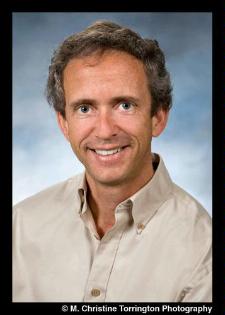Singapore: A Window On The Future Of Sustainable Cities
Jan 31, 2012 12:50 PM ET

Is the future of sustainable cities in Singapore?
From Glenn Croston's blog at Fast Company
With 7 billion people on the planet--and with this 7 billion working quickly to get us to 9 or 10 billion--resource use is the big deal of the 21st century. How we use water, energy, food, land, waste, buildings, and transportation will affect everyone and not just in the future. Singapore, a big, modern city on a very small island, is dealing with limited resources today, providing a window on the challenges and opportunities facing all of us. Singapore is a small island country with 5 million people living on 268 square miles. For comparison, New York City has about 8 million people living in 300 square miles. Singapore has few natural resources and little land but has managed to become one of the most prosperous countries in the region. Recognizing the need to use resources wisely, the government of Singapore has laid out a plan for “Sustainable Singapore," which covers waste management, land use, water use, energy efficiency, and green building. The goal is to boost both economic development and living conditions even as Singapore deals with the same resource challenges the rest of the world is facing. Buildings are one of the largest consumers of energy and contributors to climate change, making greener buildings a high priority in the plan. Singapore has set the goal of greening 80% of its buildings by 2030, an “aggressive goal” according to the Building and Construction Authority, starting from a baseline of 12% green buildings today. Certification of green buildings in Singapore uses the BCA Green Mark standard, similar to the LEED system established by the US Green Building Council. Putting their money where their plan is, the Singapore government is committing significant funds to support energy efficiency. Providing loans for energy retrofits is one way the Singapore government is supporting energy efficiency. A list of all funding initiatives supporting green development and energy efficiency is summarized here - the list is long.Orlando Tan is working in Singapore to green the building industry with his company Otto Solutions, providing a resource for others to collaborate with to meet sustainability goals. Otto Solutions is an engineering and project management firm that has worked with large clients in the area such as the National Library (Green Mark Platinum) and Singapore Airlines. “I have been a corporate worker in the ICT business for 20 years but I’ve changed direction in my life and my work to give more back to society and to give a future generation a Green earth, so going green and helping to boost sustainability in Singapore is very important for me,” said Tan. Buildings are just the start. With land precious in Singapore, the government has set the goal of recycling 70% of waste by 2030. To make the most of imported energy, a 35% improvement in energy efficiency is slated. The target for water consumption is 140 liters per person per day in 2030, compared to an average of 371 liters/person/day in the US.
Singapore is a microcosm for the world as a whole. We may not live on an island, but we all live on the same planet. Where Singapore is today we’ll all be as population and resource demands grow. At some point going green isn’t just the right thing to do, but the only thing to do. Those who tackle sustainable development and make it work will be leaders of the 21s century economy, as well as doing the right thing for us all. Glenn Croston is the author of “75 Green Businesses You Can Start to Make Money and Make a Difference”, and the founder of Starting Up Green, helping businesses everywhere to go green and do well by doing right.

